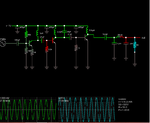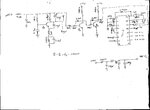- Joined
- Apr 1, 2011
- Messages
- 15,203
- Helped
- 2,901
- Reputation
- 5,814
- Reaction score
- 2,984
- Trophy points
- 1,393
- Location
- Minneapolis, Minnesota, USA
- Activity points
- 113,924
it showed some 19.76Volts!
What does it mean?? why this large voltage spike??
It is possible for your LC tank oscillations to build to such a volt level. (As shown by simulations earlier in this thread.)
Your antenna will need a certain ACV level, in order to broadcast. I don't know how high the voltage must be.
I saw an old-timer state that the crucial thing is to make the antenna resonate to your transmitting frequency. This means tuning the antenna.
You want to get standing waves within the antenna. That is when photons are emitted most efficiently from the wire.



